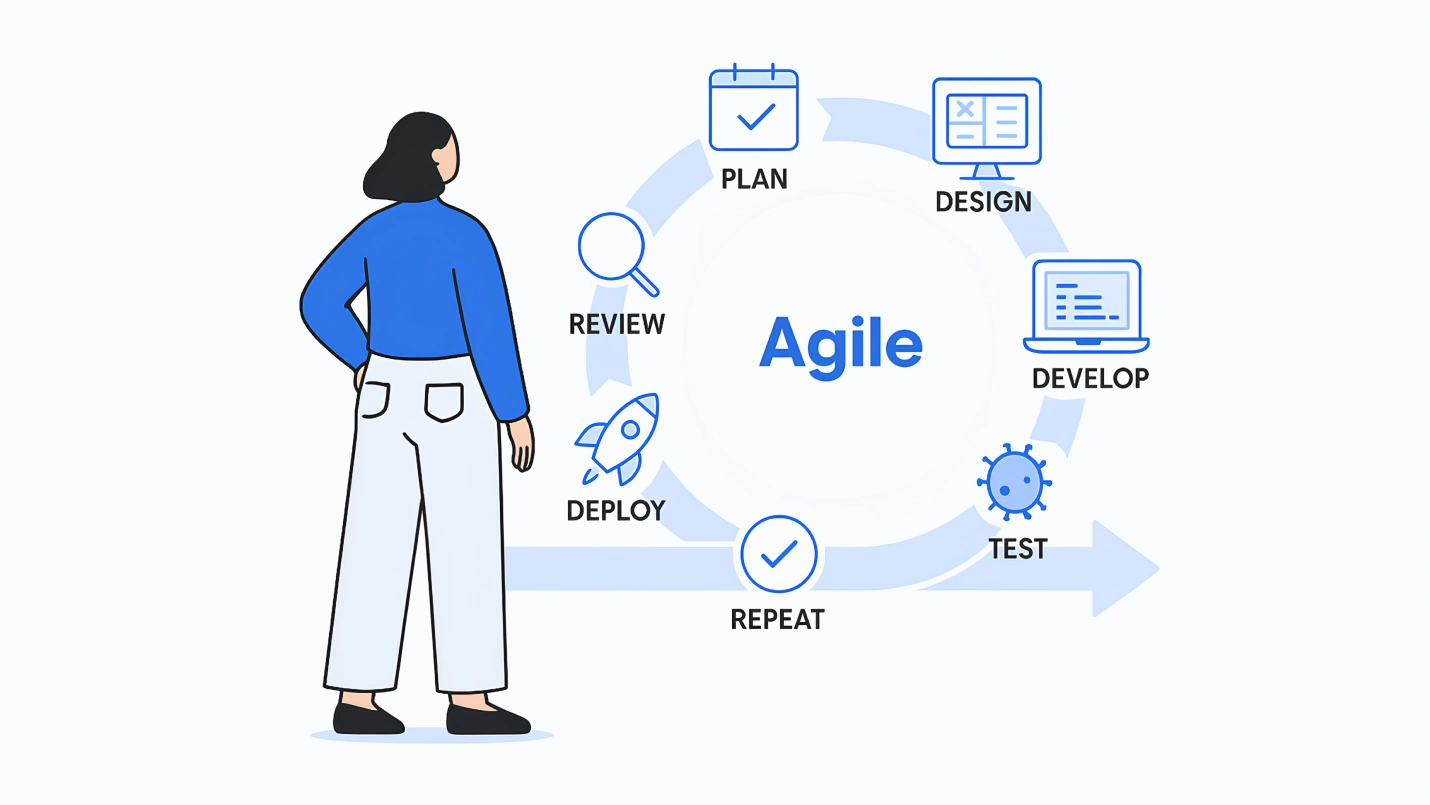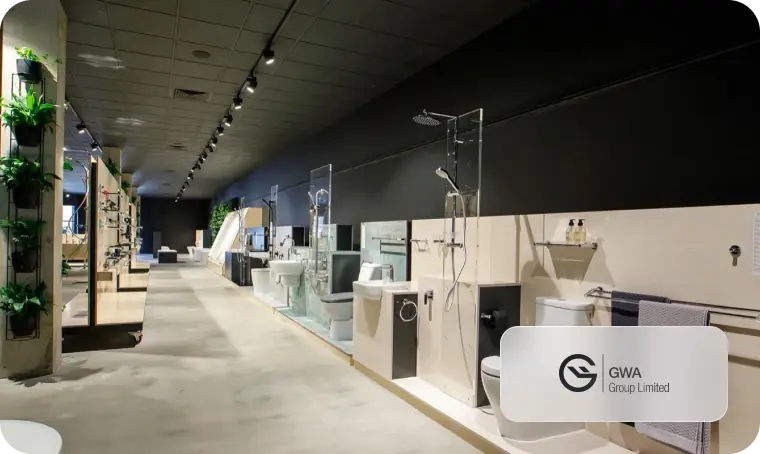According to the State of Agile Report 2020, 95% of the respondents ( no. of respondents over 40000) prefer Agile Development methodology. Agile follows the iterative and incremental model while promoting cross-functional team setups across the organization, i.e., the three key elements of Agile Methodology that ensure success.
The upshot of it — ability to organize work in time-boxed sprints, flexibility for to-and-fro movement across the development cycle, and faster time to market as everyone in the team works collaboratively towards a common goal.
The Agile project management strategy has rewired the organizational software development life cycle over the years while defying the golden hammer bias related to the Waterfall methodology, which leads to piling technical debts.
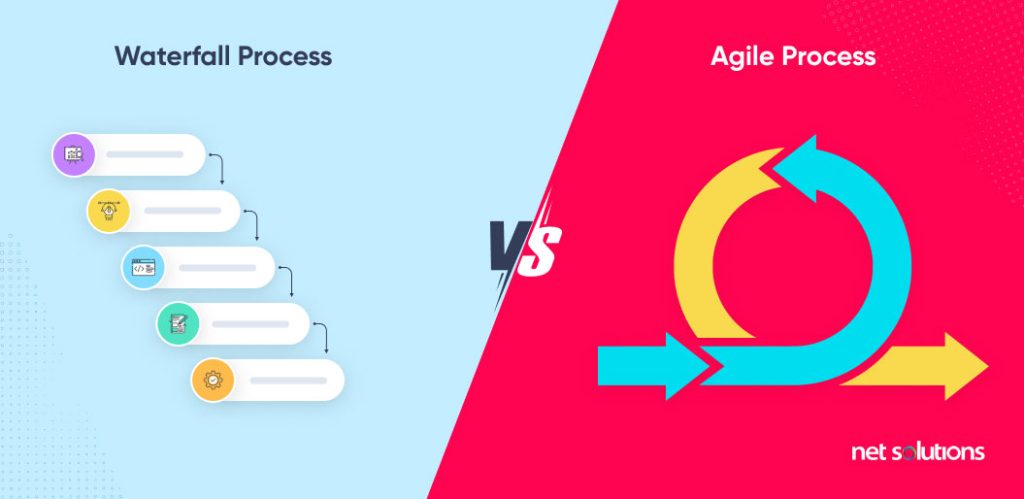
Here’s everything you need to know about how Agile development approach will benefit your value proposition while ensuring faster time to market.
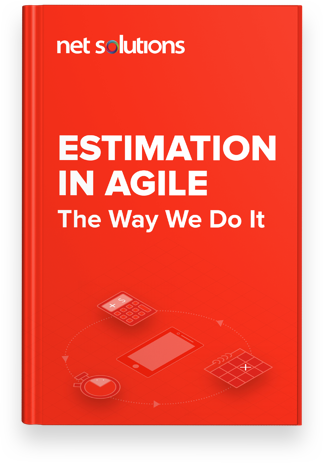
We respect your privacy. Your information is safe.
What is Agile Development Methodology?
Almost three-quarters (71%) of organizations report using Agile approaches sometimes, often, or always.
The Agile Development methodology is the innovative approach to develop software products where flexibility and speed hold precedence. Agile introduces the iterative and incremental development method to ensure foolproof and accelerated delivery.
Traditionally, development methodologies such as Waterfall dominated the software industry. But, then it followed a rigid path where no backward movement was permitted. This left no room for adding newer features while it made maintenance a challenging process.
The worst thing you can deliver in a two-year project is exactly what the customer wanted on day one. — Mike Cohn, Contributor,
Scrum Software Development Method
The Agile processes address this issue by allowing backward tracking and working in increments where smaller parts of the broader feature set are developed in time-boxed cycles.
The Agile approach to software development follows the typical development process, i.e., — requirements gathering, design, development, testing, deployment, and maintenance. However, the strategy to approach each of these stages changes when implementing Agile development methodology.
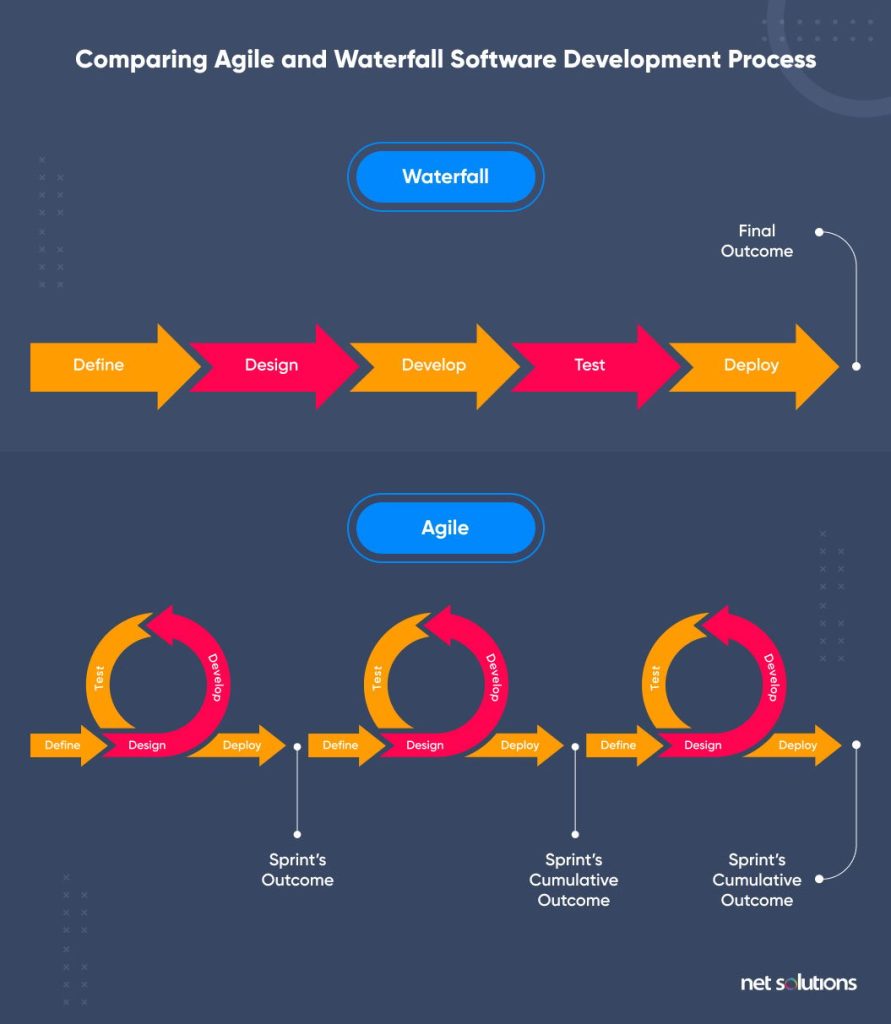
Here is what attributes the Agile Development methodology:
- Iterative development — handling feature creep and bugs
- Incremental development — developing software in smaller segments that add up to make up the larger product later on
- Working in time-boxed sprints — weekly or monthly cycles organized to deliver a workable user story
- Cross-functional setups — constant communication and collaboration among the different teams across the organization to ensure everyone’s on the same page
- Efficient management of product backlogs — making informed-decisions when planning for the next sprint cycles in the Agile Product Development process
- Retrospectives — learning from past experiences and rectifying the mistakes in the following sprints and projects
What is Agile Product Development?
When Agile development values and principles are followed when developing a new digital product, it is called Agile Product Development. The intent of the Agile Product Development methodology is to ensure:
- Product-market fit
- Faster time to market
- Quality delivery
- Continuous integration and delivery
What are the Four Core Values of Agile Methodology?
17 technologists brainstormed and came up with the four values for Agile Software Development methodology, which stated:
We are uncovering better ways of developing software by doing it and helping others do it. Through this work, we have come to value:
1. Individuals & Interactions Over Processes & Tools
Focusing on communication, this value gives individuals and interactions greater importance than the processes and tools. If teams align, they can drive the process more effectively while responding faster to the business and functional requirements.
2. Working Software Over Comprehensive Documentation
Agile software methodology streamlines documentation and offers Agile developers what they need to maintain their work without getting stalled in technicalities. The Agile Manifesto values documentation, yet, it values working programming more.
3. Customer Collaboration Over Contract Negotiation
The Agile Manifesto favors customer collaboration over contract negotiations. Agile also allows an open-end discussion between the customer and the developers. It enables the coordinated teams to align better with the customer requirements to avoid existing Agile anti-patterns.
4. Responding to Change Over Following a Plan
This value focuses on being receptive to the customers’ demands during the Agile product development life cycle rather than creating elaborate plans right at the beginning that are dismissive of changes.
Blending these values in an organization’s culture is a recommended path to a foolproof delivery.
What are the Principles of Agile Development?
There is another part to the Agile Manifesto, i.e., the 12 Agile development principles. Here’s an illustration to depict each of them:
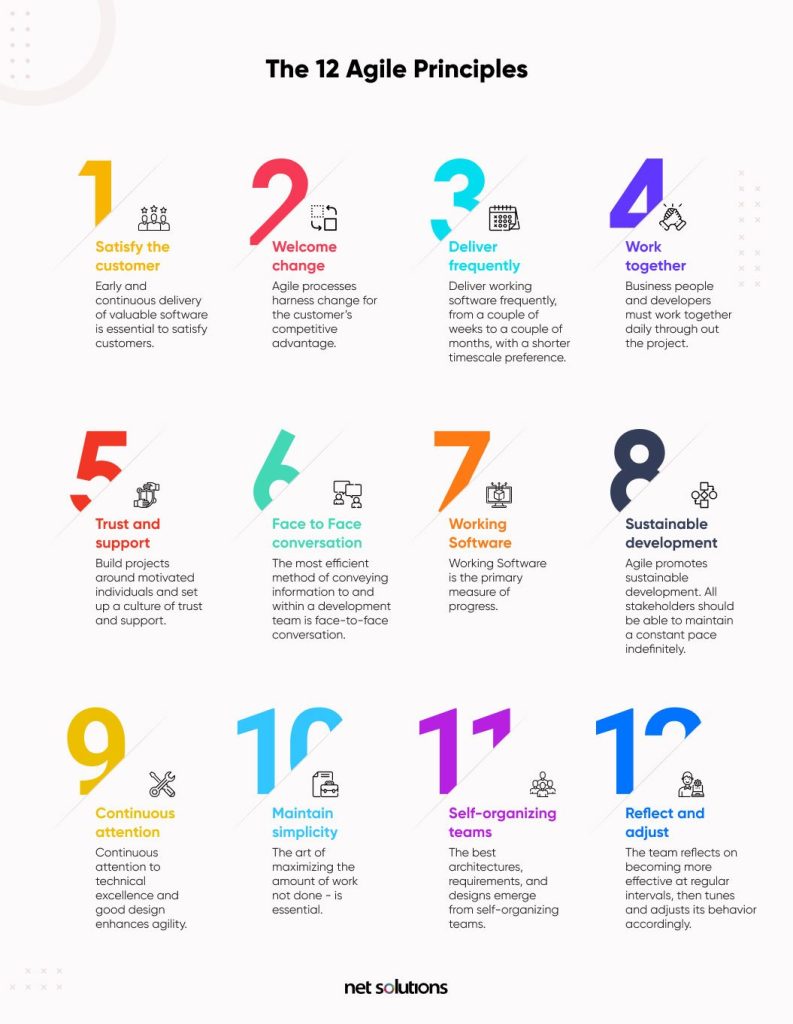
What are the Stages of Agile Development?
The agile software development lifecycle process follows the plan, code, test, deploy, and repeat model. The stages are similar to traditional software development lifecycle.
Every organization’s Agile journey is different! However, Agile is not a pre-decided path to success that you should follow. Instead, it introduces daily-standups and retrospective practices that help identify what the Agile Software development teams learned from past experiences and where improvements are required.
Here’s an overview of the basic Agile methodology process:
1. Requirements Gathering
The initial user problems that can be solved are prioritized by the scrum masters, product owners, and the team comprising designers, developers, and testers.
Scrums and daily standups are arranged to ensure regular and meaningful brainstorming sessions.
If the product is trying to propose an innovative solution, a PoC is developed to check the idea’s feasibility and the associated technology.
2. Design
The designers, architects, and developers work collaboratively to develop the software architecture and the corresponding UI and UX for the product.
Prototypes are also built at this stage for product owners and stakeholders to approve.
3. Develop
The engineering teams work in accordance with the designed software architecture and build user stories in time-boxed sprints. They collaborate with the testing team at the end of every sprint to identify and fix issues.
The Agile developers can also implement pair programming where one developer types the code, and the other developer reviews those lines of written code to increase speed and productivity.
4. Testing
The Agile Testing team members jump in at the end of every sprint cycle to identify the bugs and inconsistencies. The agile testing team conducts various types of software tests and reports the bugs back to the developers. The developers then plan and fix the code in the following sprints.
The testers also conduct pair testing where two testers sit at the same system, where one tester tests the code and the other reviews and builds the report around it.
5. Deployment
This stage of Agile Development involves launching the completed user stories in the market. This starts with the launching of MVPs, i.e., the basic versions and the following user stories and launches follow as the initial feedback flows in.
When all the user stories are delivered and launched, the deployment is called the full-fledged product deployment.
6. Maintenance
This stage involves maintaining the product to accommodate newer changes and features and bugs and inconsistencies fixtures.
The Agile Development methodology promotes following the product mindset over the project mindset for maintenance, i.e., preference is given to managing the product throughout its lifetime.
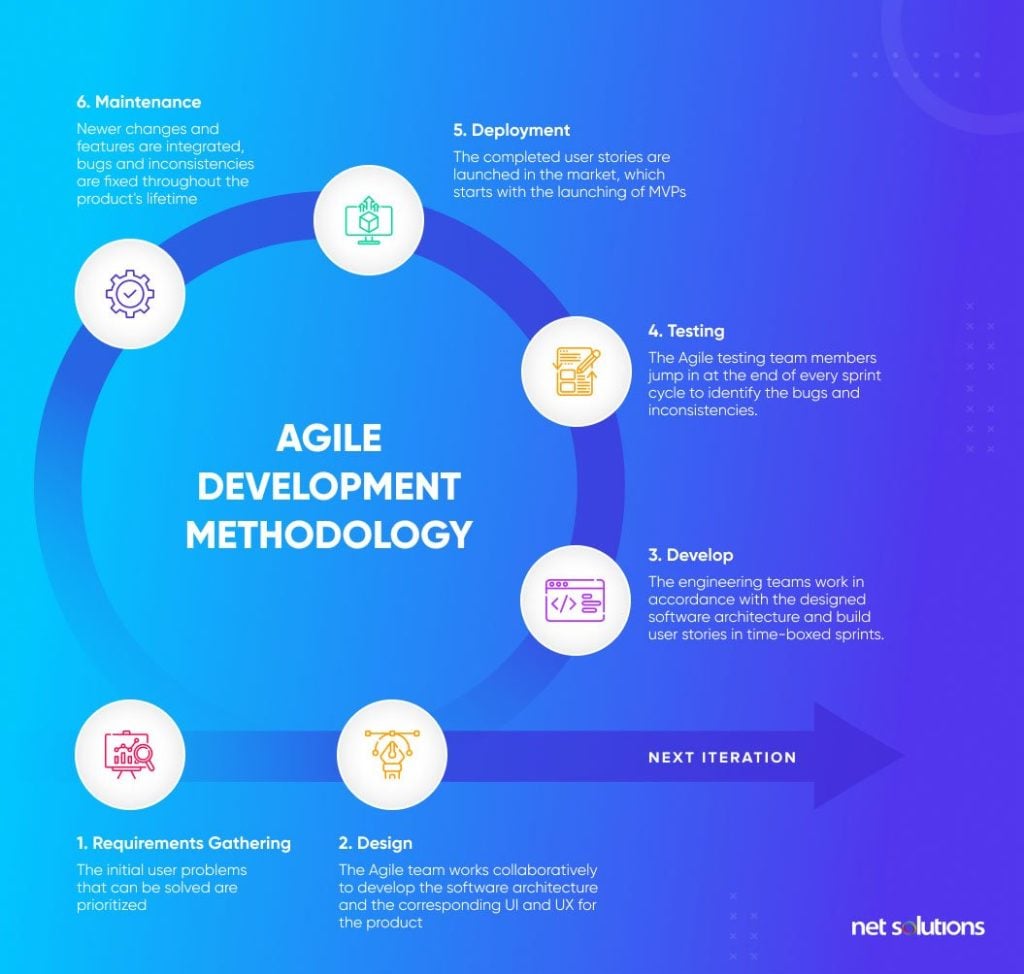
Agile Methodology Benefits
85% of 57,075 international surveyed software developers use Agile in their work. – StackOverflow
The Agile product development methodologies efficiently handles the feature creep at any stage of the development process, without hampering the product quality or time to market. The additional benefit is the cross-functional team setup that it promotes through enabling constant collaboration and communication.
Here are some of the most prominent benefits of agile methodologies:
1. Increased Value Proposition
Agile offers an enhanced value proposition in comparison to traditional product development approaches. This value is visible with respect to these parameters — visibility, adaptability, business value, and risk.
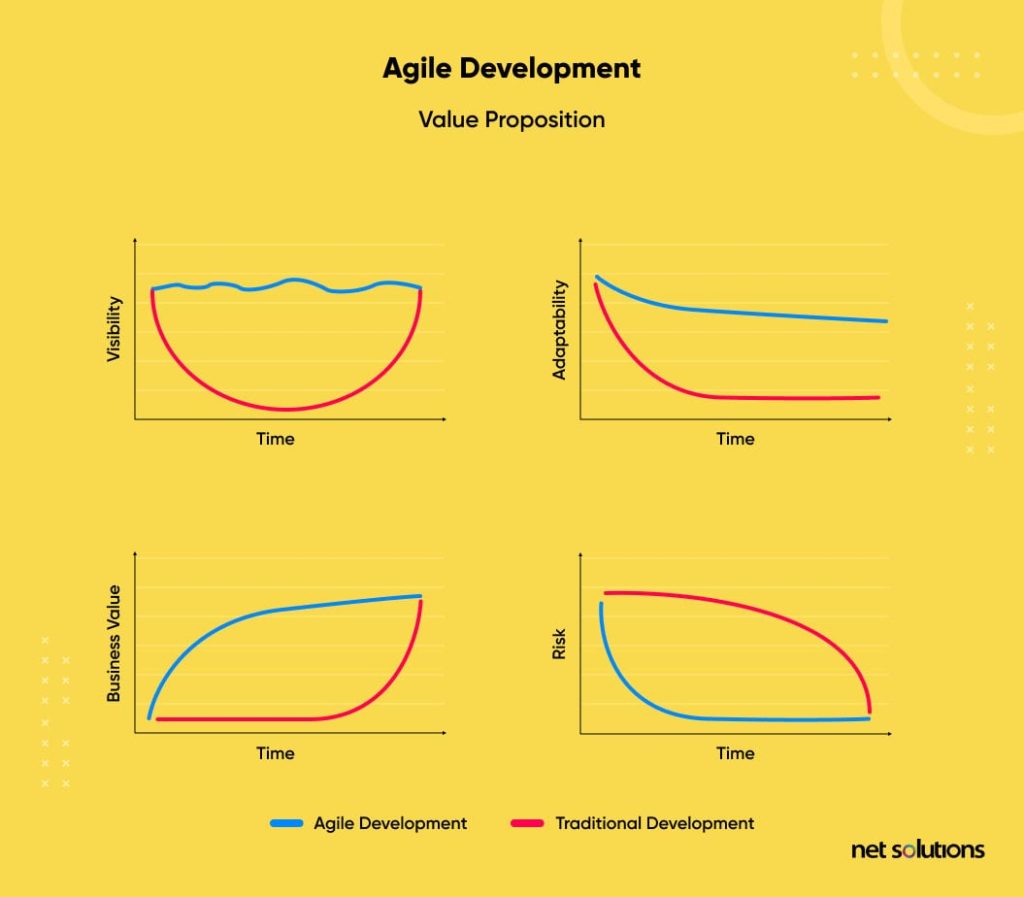
2. Speed to Market
The Agile Product Development process allows working in time-boxed sprints. Each of these sprints works on user stories in agile, i.e., a feature set that addressed the customers’ problems. Further, on completing each of these user stories, delivery follows once testing and development are completed.
The mentioned Agile development practices quicken the speed to market or the lead time as the 12-18 month delivery cycles transform into 1-2 iterative delivery cycles.
3. Flexibility
Adaptability and acceptance to change is a major benefit of Agile Transformation. By flexibility, we mean that Agile Development methodology allows the to-and-fro motion across the development lifecycle while addressing the impediments on the way.
The Agile Testing team collaborates with the developers at the end of each sprint cycle to identify and fix inconsistencies there and then, unlike the traditional approach that treats development and testing independent of each other.
4. Risk Reduction
Agile Product development practices suggest to prioritize and organize your user stories well in advance. When these user stories are developed and delivered in the form of MVP, it helps gather feedback based on initial releases — forming the foundation for product backlog planning.
The iterative and incremental development thus results in foolproof deliveries, no matter how long the project lasts.
Here’s an illustration that depicts how risk reduces as you develop and deliver user stories often.
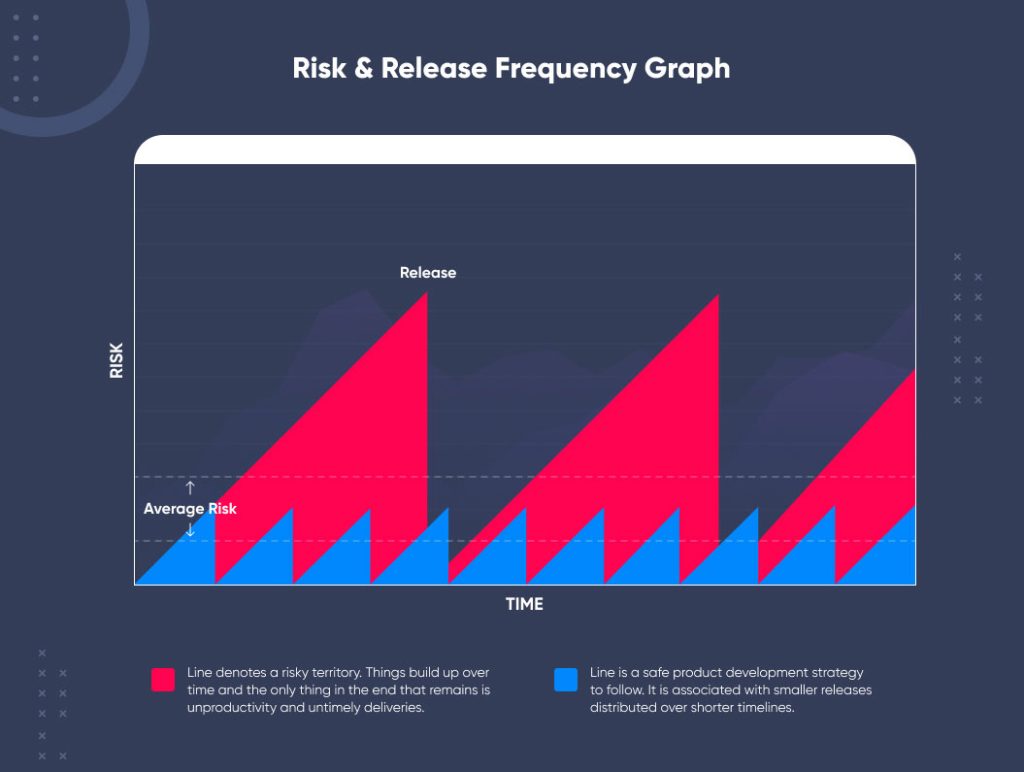
5. Addresses Technical Debt
In traditional product development approaches such as Waterfall, the testing team jumps in only when the development is over. In the absence of the cross-functional team setup, reworks’ cost increases as the inconsistencies pile up, requiring more time to fix it.
On the other hand, Agile Project management fosters cross-functional setups where — collective ownership, constant communication, and swarming activities are given precedence to complete a task at a sustainable pace. This close collaboration, in turn, helps reduce technical debt, i.e., the additional cost of reworks.
6. High Quality
When one large task is subdivided into smaller tasks, it becomes easier for the Agile teams to master the iterations and the smaller tasks. It is about polishing the smaller tasks over messing the larger product for ensuring faster time to market.
The teams involved ensures that every sprint cycle oozes productivity, be it — designers, developers, or testers.
Types of Agile Methodology
Agile methodologies primarily focus on embracing and adapting to the change and ultimately deliver efficient software. When it comes to the types of agile development methodology, there are different methodologies in the agile development model.
1. Scrum
Scrum is a framework where you can address complicated adaptive problems and productively and efficiently deliver products of the highest value. In scrum, the work is divided into iterations known as sprints. Multiple scrums can be integrated to build a release under which the product delivery is made to the market.
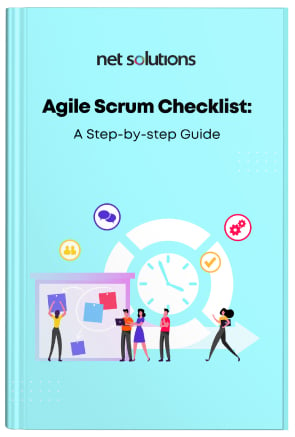
We respect your privacy. Your information is safe.
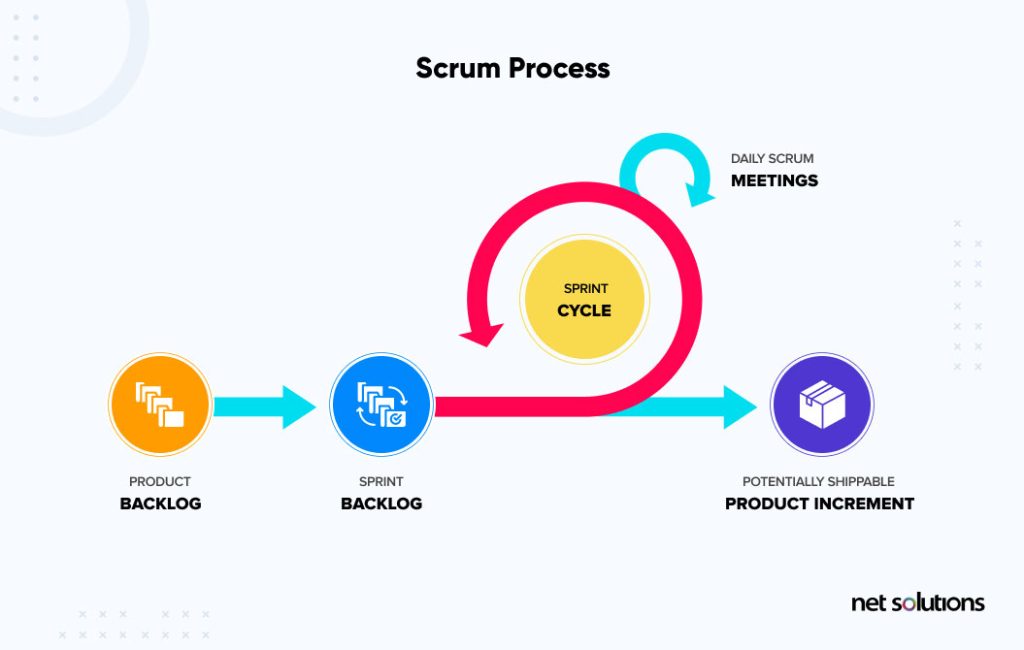
2. Lean
Lean is an iterative approach that emphasizes the utilization of effective value stream mapping so that the team can deliver value on the customer’s end. The major principles on which lean agile methodology operates are- fostering integrity, increased learning, understanding the whole, empowering the team, delivering the product at the earliest, and removing waste. It is based on quick and reliable feedback amongst the customers and programmers for offering fast and efficient development workflows.
3. Kanban
Kanban relies on a highly visual workflow management strategy that enables people to manage product creation, focusing on continuous delivery without stressing over the software development lifecycle (SDLC). Kanban allows delivery continuously instead of in time-buckets of 2-3 weeks, minimizes the lead time for delivering value to the customer, and receives feedback instantly.
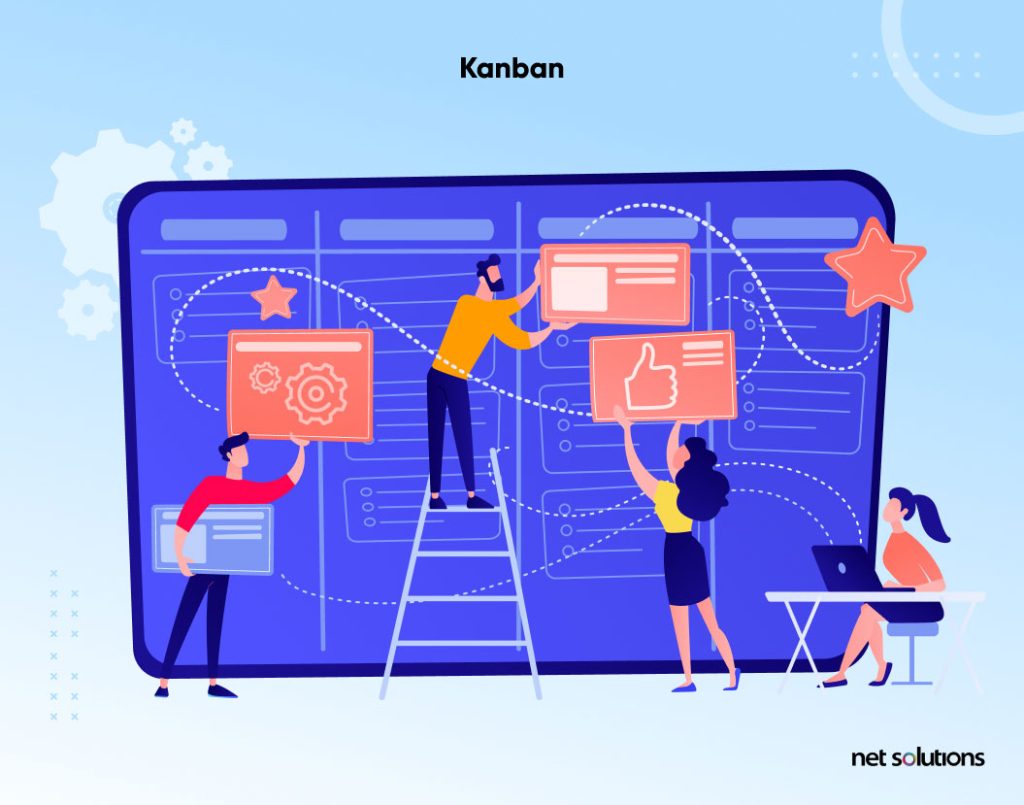
4. Dynamic System Development Method (DSDM)
The major emphasis of the Dynamic System Development Method (DSDM) is on software projects labeled by tight schedules and budgets and ensures frequent delivery of product cycles and iterative yet incremental development. The DSDM approach allows developers to design a roadmap in the early stage and continuous deliveries for the project, executing an incremental solution and adapting from the feedback received during the process.
Under the DSDM approach, rework is built into the process while the changes need to be reversible. All the system requirements are prioritized as per the MoSCoW rules.
The Moscow method is a prioritization technique used in management, business analysis, project management, and software development to reach a common understanding with stakeholders on the importance they place on the delivery of each requirement; it is also known as MoSCoW prioritization or MoSCoW analysis.
The four prioritization categories are:
- M – Must have
- S – Should have
- C – Could have
- W – Won’t have
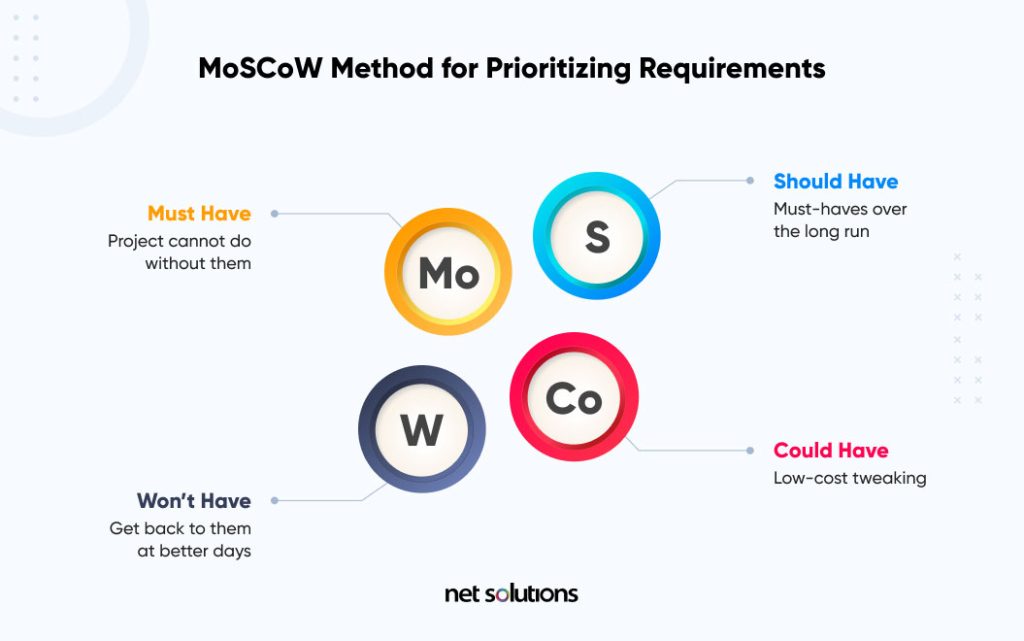
5. Extreme Programming
Extreme programming (XP), aka paired programming, is an agile methodology that centers around improving interpersonal relationships for software development success using agile methodology. It promotes teamwork, improves the learning of developers, and promotes a great working environment.
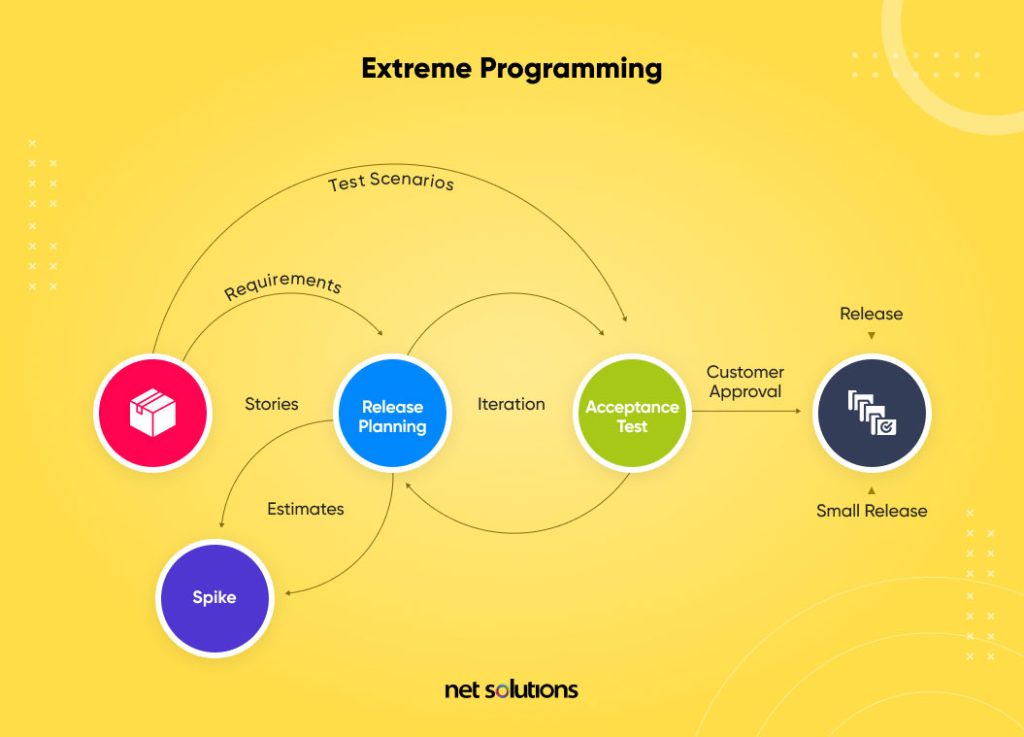
In pair programming, the developers work in pairs where one developer does the programming part and the other observes and then they switch their roles regularly during the sprint. This helps in continuous code review and feedback, which further helps in code quality and developer capability.
6. Feature Driven Development (FDD)
Feature-driven development (FDD) is preferred for larger teams with a focus on short iterations, enabling tangible deliveries of the product in 2 weeks. Feature-driven development comprises activities that help in addressing communication issues and coordination of such projects.
Feature-driven development is a five-stage process where the first three are sequential and the other two are iterative.
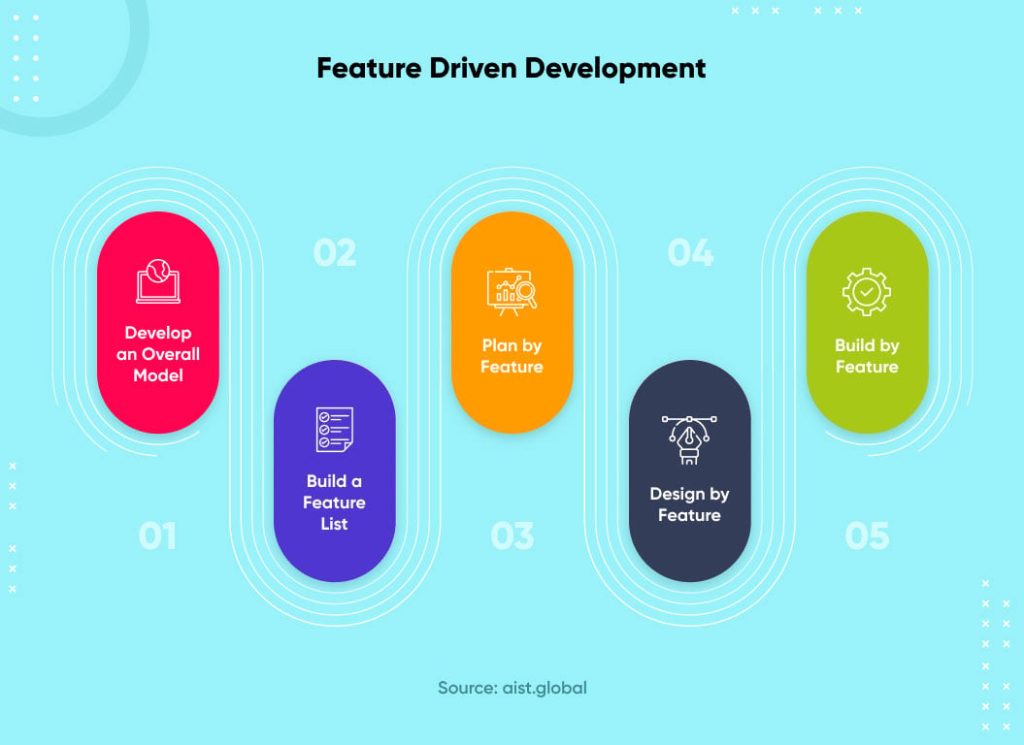
7. Crystal
Crystal is an adaptable methodology with an emphasis on individuals and the interactions taking place throughout an Agile project and business-criticality and priority of the system under development. The key principles of crystal methodology include communication, teamwork, and simplicity, focusing on people interaction, skills, community, talents, and communications.
Commonly Used Tools/ Practices for Agile Project Management
To ensure that the Agile Product Development initiatives are streamlined, relying on product management tools can help. These include:
1. User Story Maps
User story maps help visualize features that the product should include. This visualized structure further helps in prioritizing user stories and divide them into “must-have” and “nice-to-have” features.
2. Product Roadmaps
A product roadmap is a shared source of information that highlights the vision, the prioritized user stories, and the progress status of the product under development. These roadmaps help ensure that the Agile team is on the same page while it also maintains the transparency of the agile methodology development process.
3. Niko-Niko Calendar
The Niko-Niko calendar is a date calendar that highlights each team member’s mood for the day. These calendars help in tracking the mood dynamics and the morale of the team. The mood changes help identify the factors leading to good/bad mood, which, further, helps make the required changes for driving performance improvements.
4. Swarming
Swarming is an activity where the different members of the Agile team come together to solve a problem related to the delivery of a user story. This is done at any product development stage, where everyone collaboratively works on the same prioritized task.
5. Customer Journey Maps
Customer journey maps are a visual representation of the customer’s steps while engaging with the product. Creating these maps after the launching of MVPs help in identifying the bottlenecks in the customer experience your product offers. These insights can further help in planning for the next sprint cycles.
Processes Involved in Agile Development Methodology
Some of the prominent processes and practices followed by Agile Development methodology include:
1. User Story Prioritization
User stories or features are the functional requirements of the software under development. Before moving on with implementing the Agile Development methodology, the teams need to prioritize the user stories based on:
- Must-Have Features: These are the features that are essential for the software
- Nice-to-Have-Features: These are the features that can be worked upon later after the MVP is launched
2. Daily Standups/Daily Scrum
These are meetings that are conducted daily to measure the team’s progress while ensuring accountability.
Daily standups are essential for identifying the team’s problems, backlog grooming for planning for the coming sprints, the progress, and the team’s morale to — ensure that the Agile team is on the same page. At the same time, it maintains a sustainable pace for development.
3. Agile Retrospectives
An agile retrospective is a meeting that we hold at the end of each iteration in agile software development. In this meeting, we reflect on everything we learned throughout the sprint so that we don’t repeat the same mistakes in future. The idea is to learn from your experience and find better ways to deliver the software.
Following are the questions each member has to answer during the agile retrospective:
- What worked for you?
- What didn’t work for you?
- Are there any actions we can take to improve the process in future?
- Are there any challenges, hurdles, or barriers that need to be addressed as soon as possible?
One of the key challenges that you might face during an agile retrospective is that not all members may be willing to contribute. So, it’s important to set the stage and create a comfortable and friendly environment in your team.
4. Sprints
Sprint cycles are a prominent part of the Agile Development methodology process. Here the prioritized user stories are divided into time-boxed sprints — weekly or monthly cycles at the end of which the completed user stories need to be delivered.
5. INVEST
This is an activity to ensure the quality of the completed user story. INVEST stands for:
- Independent — The user story should be independent and loosely coupled with the other user stories
- Negotiable — The user stories should be open for reviews. The team should be able to modify and delete the user stories based on the changing requirements
- Valuable — The individual user story should offer value to the client and the end-user
- Estimable — Agile estimation should be feasible, i.e., the user story size and its future scope should be estimable
- Small — The user story size should be small enough to be achieved in a few days or weeks. When the user stories get extended over that period, the user stories are referred to as epics, which, in turn, need to be broken down into smaller segments that can be achieved conveniently by the Agile teams
- Testable — The user story should be independently workable and testable
In case the user story fails at any of the mentioned parameters, it implies that the team needs to rework on it.
Myths Around Agile Development Methodology
The Agile development model is puddled in many myths that hamper the product development process while evoking negative sentiments around it. Here are some of them:
Myth 1: “A”gile and “a”gile are Same
Agile with capital “A” is associated with software or product development, i.e., a process that follows the Agile Manifesto values to develop timely deliverables while celebrating collaboration across the organizational hierarchy.
It is about doing Agile!
On the other hand, agile with a small “a” is associated with organizations following the Agile Manifesto values to drive productivity at the organizational level by promoting collaboration and cross-functional setups. i.e., it applies to the way an organization works.
It is about being agile.
Myth 2: Iterating means Repeating Increments
You must have heard these two terms often over the daily standups, but what do they imply?
An iteration is a repetition of the agile development process to create a new user story or deliverable or a repetition of the Agile product development lifecycle to fix and polish the already created user stories.
Whereas, an increment is the delivery of a user story at the end of each sprint cycle. The collaboration of these increments helps create a fully-fledged product.
When these increments are loosely coupled and can function independently of the existing user stories, it is known to follow the microservices architecture.
Myth 3: Scrum and Agile are the Same
Most of the time, organizations confuse Agile Development and the scrum process to be the same. However, there is a difference between Agile methodology vs Scrum.
Simply put, Agile lays down the process, followed by software development teams to ensure quality and timely delivery. On the other hand, Scrum is one of the frameworks of agile product development frameworks.
The Scrum guide explains the true intent of scrum, which states:
“A framework within which people can address complex adaptive problems, while productively and creatively delivering products of the highest possible value.”
Popularly known as Agile Scrum methodology, the idea behind the combined approach is to work collaboratively while maintaining constant communication among the different teams involved to accomplish a task at hand.
Here is how scrum addresses each of the Agile Manifesto values:
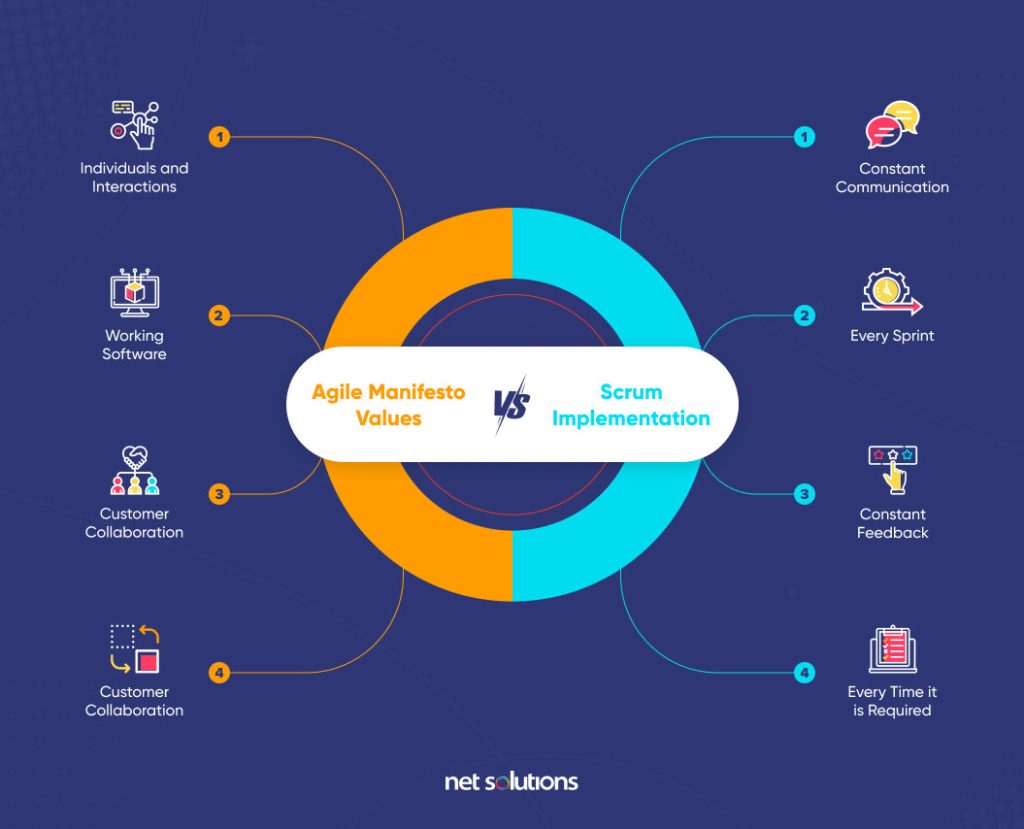
FAQs
Scrum framework divides the development into sprint cycles.
Agile methodology includes concept, inception, construction, release, production, and retirement phases.
Agile implementation methodology involves the process of executing a flexible project plan depending on building small portions of a project at a time. Sprints are tentative that ensure continuous changes to the plan depending on present business requirements.
The major disadvantages of the agile methodology include limited documentation, difficult measurement, fragmented output, and difficulty maintaining collaboration.
Agile scrum methodology accompanies countless benefits like encouraging products to be built faster, ensuring more flexibility and adaptability, innovation, lower costs, quality improvement, and customer satisfaction.
The major 4 principles of agile methodology are- satisfying the customer, welcoming change, delivering frequently, and working together. While other principles include- trust and support, face-to-face conversation, working software, sustainable development, continuous attention, maintaining simplicity, self-organizing teams, and reflect and adjust.
- Increased value proposition
- Speed to market
- Flexibility
- Risk reduction
- Addresses technical debt
- High quality
The agile methodology in project management is dependent on delivering requirements iteratively and incrementally across the lifecycle. Common methods for agile methodology in project management include- scrum, kanban, lean, six sigma, agile, and so on.
Agile is the approach to create and respond to a change where agile teams break the work down into functions, decompose those into small pieces, and further build in small pieces. The agile approach ensures utmost satisfaction on the customer’s end through early and continuous delivery of valuable products or software.
Conclusion
The Agile Development methodology is the rewired approach to software product development that focuses on flexibility and speed. Most of the digital products today are created using the Agile development method.
This comprehensive guide on Agile methodology touches base with everything Agile is about and how it benefits your bottom line. The secret to delivering working software in the market is to follow the safe agile methodology while also embracing the agile mindset.
In the words of Abraham Maslow — at any given moment, we have two options: to step forward into growth or step back into safety.

